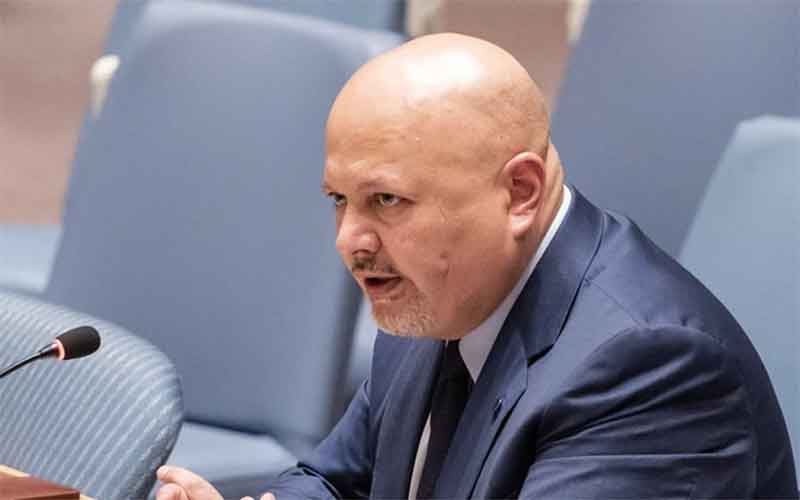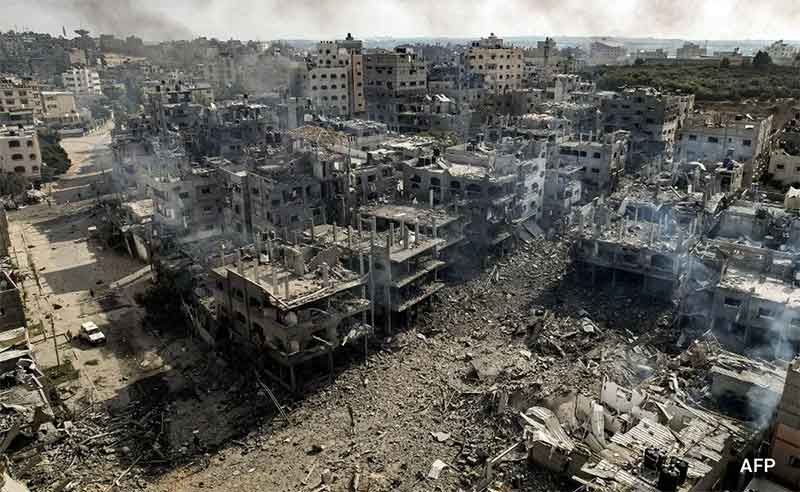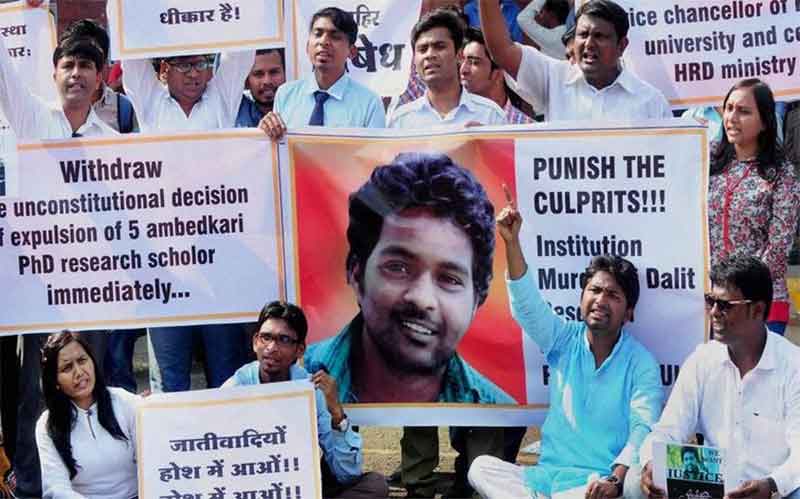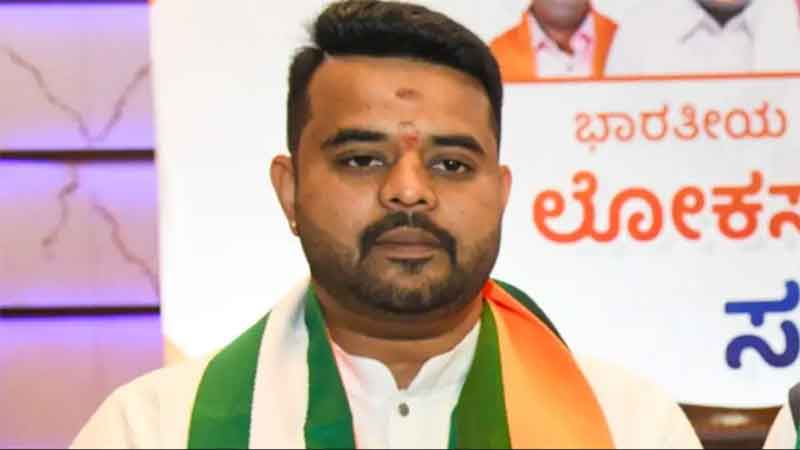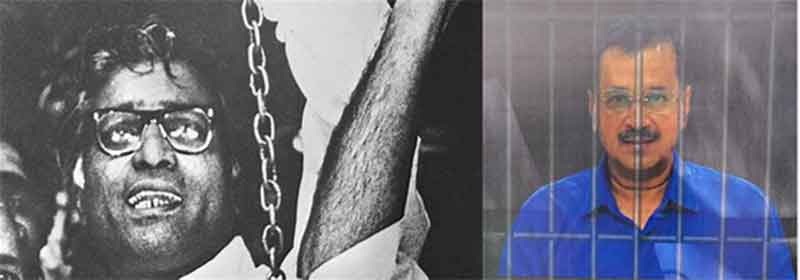by Rupa Marya and Vijay Prashad

On November 11, 2023, the Palestinian Red Crescent Society (PRCS) stated that Israeli tanks were within twenty meters of the al-Quds hospital, the second-largest hospital in Gaza City. They reported that there was “direct shooting at the hospital, creating a state of extreme panic and fear among 14,000 displaced people.” Many of those killed have been medical personnel. A group called Healthcare Workers Watch-Palestine, formed in November 2023, has been keeping a list of healthcare workers in Gaza killed by Israeli attacks (226 are known to have been killed from October 7 till November 13).
The day before, the International Federation of Red Cross and Red Crescent Societies (IFRC) reported that the PRCS is “caring for hundreds of injured people and bed-ridden, long-term patients” at al-Quds. “Evacuating patients, including those in intensive care, on life-support, and babies in incubators, is close to, if not impossible in the current situation,” said the IFRC. This and other hospitals as well as medical missions and medical workers “are protected under international humanitarian law,” noted the IFRC. The legal framework they referred to is straightforward:
1. Article 19 of the 1949 Geneva Conventions (Protection of medical units and establishments). “Fixed establishments and mobile medical units of the Medical Service may in no circumstances be attacked, but shall at all times be respected and protected by the Parties to the conflict.”
2. Rule 25 of the International Humanitarian Law (Medical Personnel). “Medical personnel exclusively assigned to medical duties must be respected and protected in all circumstances.”
Two similar phrases in both the Article and the Rule stand out: “in no circumstances” must the protection be withdrawn, and medical workers must be protected “in all circumstances.” Humanitarian law applies to all parts of the world and all conflicts. This is now established by the Treaty of Rome (2002), which is the legal basis for the International Criminal Court. The Treaty of Rome says that it is a war crime if an army is “intentionally directing attacks against buildings,” including “hospitals and places where the sick and wounded are collected.” There is one exception: “provided they are not military objectives.” By claiming that the hospitals are above Hamas tunnels, the Israelis are claiming that the entire medical infrastructure in Gaza is a military target. This is a convenient way to skirt the absoluteness of international humanitarian law.
In the coming days, we can expect the Israeli propaganda machine to pump out images of IDF soldiers in the tunnels under decimated hospitals holding up guns and copies of Mein Kampf to counter the horrific real-time images of premature babies dying. While these are attempts to justify murdering healthcare workers and the patients they were caring for, they won’t hold up against International Humanitarian Law. Israel has a documented history of bombing hospitals and other healthcare facilities in Gaza, and any doctor versed in patient care quality and safety would insist that underground spaces were constructed to conduct patient care far from the shrapnel of these air strikes.
‘At All Costs’
Across the world on November 11, the American Medical Association (AMA) held a meeting of its House of Delegates while these terrible acts took place. When over 135 medical students and doctors in training in the AMA tried to hold a discussion about a resolution that would call for a ceasefire in Gaza, the AMA leadership shut them down. Those who supported the effort said that there was a “coordinated effort at the national meeting to shut the resolution down, with the Speaker not allowing delegates their allotted 90 seconds to speak about the resolution.” The AMA said that this resolution was “not relevant to advocacy.” “The AMA,” wrote the medical personnel who framed the resolution, “has a responsibility to uphold the wellbeing of healthcare workers and minimize human suffering, and it is clear that these values are not being upheld by some of the most influential physicians in the country, nor is the democratic process being respected.”
This stands in stark contrast to the AMA’s official position on Ukraine in 2022, when they threw their institutional weight behind a call for an immediate ceasefire and an end to Russian attacks on healthcare workers and facilities, emphasizing that international humanitarian and human rights laws must be and civilian and medical personnel lives must be protected “at all costs.”
Every Life Is Sacred
A few days before the House of Delegates meeting, the flagship journal of the AMA, the Journal of the AMA (JAMA), published an article by Dr. Matthew Wynia from the Center for Bioethics and Humanities at the University of Colorado and the co-chair of the AMA’s Taskforce on Truth, Reconciliation, Healing, and Transformation. His article “Health Professionals and War in the Middle East” makes three unimpeachable points:
– First, health professionals should condemn dehumanization and acts of genocide.
– Second, health professionals should vigorously oppose both antisemitism and anti-Muslim hatred.
– Third, health professionals have special responsibilities to speak out against certain war crimes.
We concur with all three of these points, including the final sentiment by Dr. Wynia: “In wartime, our profession must remain the living embodiment of religious injunctions to treat every life as sacred, because to save a single life is to save an entire world.”
Dr. Wynia’s article in JAMA, published a few days before the AMA meeting, suggests that it would have been uncontroversial for the AMA to pass a resolution asking for a ceasefire. After all, a ceasefire would allow fellow medical workers to do their work without fear of bombardment, it would stop the killing of civilians, and it would allow for investigation into the attacks on medical facilities and medical workers. If “every life is sacred,” then a medical body must join in the call to prevent any further loss of innocent life. But this is not what happened at the AMA meeting, whose refusal to open the floor for discussion about a ceasefire resolution suggests the opposite approach.
A closer reading of Dr. Wynia’s article shows why medical professionals decided not to allow even a discussion of a ceasefire in Gaza. “Health professionals of goodwill and equally strong commitments to human rights have differing questions on these questions, which reflects the nature of the questions,” Dr. Wynia writes. Introducing moral relativism to the discussion, Dr. Wynia allows for ambiguity where there is none—none in legal terms and none in moral terms. How can “health professionals of goodwill” have a disagreement about the targeting of medical workers and medical institutions or indeed how can they disagree about the killing of civilians, including those who are injured and sick in hospitals? There is room for debate over what must be done when confronted by the evidence of attacks on medical workers and medical workers, but there is no ambiguity about their illegality and immorality.
Dying One by One
Israel has been spreading propaganda over the past several weeks about the presence of Hamas headquarters under one of Gaza’s hospitals—Al-Shifa—to inject a space of moral confusion around protecting healthcare workers and healthcare facilities. On November 5, a group of almost 100 doctors in Israel circulated a letter calling for the annihilation of all hospitals in Gaza, as if to sanction the IDF’s direct attack on the most sacred spaces of our profession. On November 11, Israel also bombarded the Al-Shifa Hospital complex with 1,700 sick and injured patients inside and about 50,000 displaced people sheltering in its courtyard according to Dr Ghassan Abu Sitta, a surgeon who was stationed there at the time. Israeli attacks have completely destroyed the hospital. With the power now out in Al-Shifa, 39 newborns in incubators are now wrapped in blankets, dying one by one. Perhaps this is whom Israeli Prime Minister Benjamin Netanyahu referred to when he said the “children of darkness.”
Israel’s attack on Gaza’s healthcare is an attack on the soul of the medical profession, for which JAMA has provided cover and the AMA supports through enforced silence. Why the American Medical Association can make such a blunt statement about Ukraine but want to remain silent about Palestine raises an important question: does the AMA advocate only for the issues outlined by the U.S. State Department or are these the opinions of the doctors who make up its membership?
Rupa Marya, MD, is a professor of medicine at the University of California, San Francisco, co-founder of the Do No Harm Coalition, and co-author with Raj Patel of Inflamed: Deep Medicine and the Anatomy of Injustice.
Vijay Prashad is an Indian historian, editor, and journalist. He is a writing fellow and chief correspondent at Globetrotter. He is an editor of LeftWord Books and the director of Tricontinental: Institute for Social Research. He has written more than 20 books, including The Darker Nations and The Poorer Nations. His latest books are Struggle Makes Us Human: Learning from Movements for Socialism and (with Noam Chomsky) The Withdrawal: Iraq, Libya, Afghanistan, and the Fragility of U.S. Power.
This article was produced by Globetrotter.


